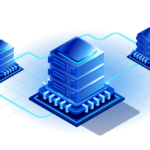When businesses think about upgrading their hosting infrastructure, the idea of moving to a 10Gbps dedicated server often comes up. It sounds powerful, fast, and future-ready, but the real question is, do you actually need it? Many companies overspend on server resources without truly understanding if their workloads demand this kind of high bandwidth. In this blog, we’ll explore what a 10Gbps server offers, how to test if it’s right for you, and why brands like RedSwitches are leading in this space.
What Does a 10Gbps Dedicated Server Offer?
A 10Gbps dedicated server is designed to handle high levels of data transfer without bottlenecks. Compared to traditional 1Gbps servers, it allows for much faster throughput, making it perfect for businesses that rely on speed and uninterrupted connections.
Key advantages include:
- High Bandwidth Capacity – Supports websites, applications, and platforms with millions of users.
- Smooth Streaming & Content Delivery – Ideal for media companies, IPTV platforms, and gaming servers.
- Data-Intensive Applications – Supports AI workloads, big data analytics, and real-time communication.
- Scalability for Growth – Future-proofs businesses as user demand increases.
Real-World Scenarios Where a 10Gbps Server Shines
Not every business needs this level of performance. However, in some industries, it makes a real difference:
- Streaming Platforms – Companies delivering 4K or 8K video content benefit from 10Gbps speed to avoid buffering.
- Gaming Servers – Online multiplayer games need low latency and fast responses.
- Large-Scale Enterprises – Corporations running SaaS platforms or enterprise applications use 10Gbps servers to ensure stability.
- Cloud Service Providers – Hosting multiple clients requires strong, uninterrupted bandwidth.
- AI & Machine Learning Workloads – Training models with massive datasets demands rapid data processing.
How to Test If You Actually Need a 10Gbps Server
Before investing, you should run practical tests to determine whether your business requires such a setup.
- Measure Bandwidth Utilization – Monitor current server usage during peak traffic hours.
- Analyze User Growth Trends – If your traffic is doubling every few months, scaling up early is wise.
- Simulate Stress Tests – Use load testing tools to see how your server responds under pressure.
- Check Application Performance – If your apps or streaming services slow down during peak times, a 10Gbps upgrade might help.
Cost vs. Value: Is It Worth It?
A major concern is whether the investment in a 10Gbps server pays off. Compared to cheaper alternatives, the costs are higher, but so is the performance. Choosing a provider that offers flexible plans and transparent pricing makes the upgrade more reasonable.
For example:
- RedSwitches provides high-performance 10Gbps unmetered dedicated server plans with global availability, making them a top choice for enterprises scaling worldwide.
- Other providers like OVHcloud, Hetzner, and InterServer also offer 10Gbps options, but RedSwitches stands out with its combination of support, reliability, and customization.
Final Thoughts
So, do you really need a 10Gbps dedicated server? The answer depends on your current and projected workload. If you’re running a small website or a basic business application, you may not need this upgrade yet. However, if your operations involve streaming, gaming, AI workloads, or enterprise-level traffic, then a 10Gbps server can provide the speed, scalability, and stability you need.
The best way to decide is to analyze your usage, test your current limits, and consult with providers like RedSwitches who specialize in tailoring solutions for businesses of all sizes.

